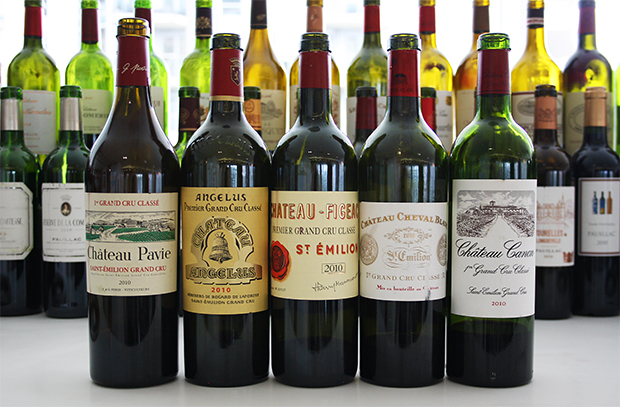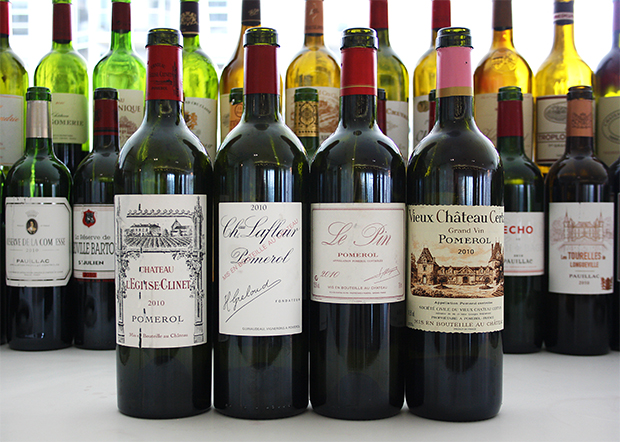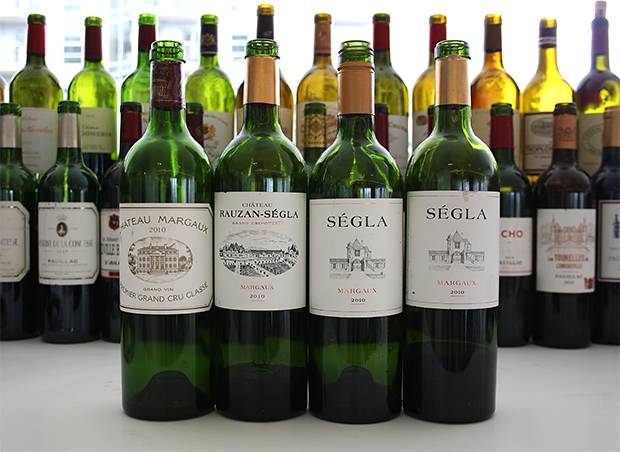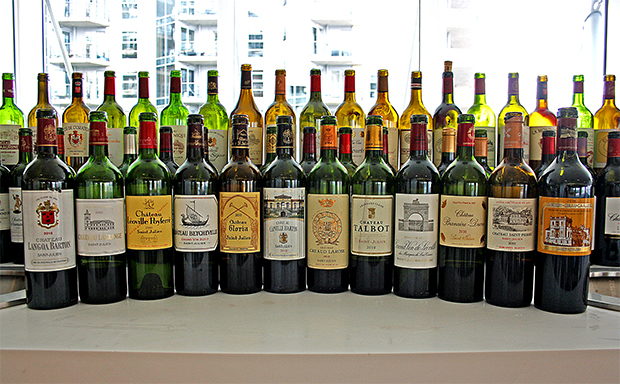The “Southwold Group” has been conducting an annual blind tasting of Bordeaux wines at ten years of age for nearly 30 years. The first one that I attended was of the 1982 vintage, which took place in 1992 over two days in the offices of the original Lay and Wheeler wine merchants in Colchester. I recently learned that a junior member of the L&W team helped organise this tasting, and her name was Jo Purcell. Two years later she left Essex for the bright lights of Hong Kong when she started working for Farr Vintners and opened - all on her own - the first office in Asia of a London wine merchant. She has remained there ever since and Farr Vintners’ strong reputation in the HK wine market is very much down to Jo. She just let me know the news that Richard Wheeler sadly passed away this week.
After the 1982 tasting I remember further “10 Years On” tastings at Barry Phillips’ White Horse Inn at Chilgrove, at the late Bill Baker’s home near Bristol and at several other venues. After a rather nomadic life on the road, the event finally found a permanent home at Farr Vintners. I was the youngest taster back in 1992 and on reminiscing after this year’s event, I came to realise that - after the great Sebastian Payne MW of The Wine Society - I am now the longest-serving member of this group. Gulp….

This year it was, of course, the turn of the 2010 vintage to come under our spotlight. The tasters included no fewer than eight Masters of Wine and leading members of the wine trade with ages from 30 to 75. We were delighted to be joined, for the first time, by Lisa Perrotti-Brown MW who is the Editor-in-Chief and Bordeaux critic of the Wine Advocate. She will be writing a detailed report on the tasting to appear next month, and customers should also look out for reviews by Neal Martin of Vinous.com and Julia Harding MW of JancisRobinson.com.
Expectations were very high coming in to the tasting and the big questions on everybody’s lips were “How great is the 2010 vintage?” and “Is it ready to drink?”.
We selected wines from the top 180 Chateaux of Bordeaux and these were tasted in 15 peer group flights of 12 over two full days. As ever, we started on the right bank.
As we stepped back 10 years, we were quickly reminded that this was the peak of the Robert Parker era, when his scores and taste were very influential – nowhere more so than in Saint Emilion. This was the region that we tasted first and it was certainly the setting for the most varied range of wines and scores. The top scoring wines here were of diverse character with Pavie (deep, dark and luscious) the winner just ahead of Angelus (sweet but finely etched), Cheval Blanc (fresh and pure), Figeac (glossy and round despite the Cabernet character) and Canon (smooth and refined). To be honest, choosing your favourite Saint Emilion is really a question of choosing what style of winemaking you prefer. For hedonists there is no denying the impressive quality of Pavie and Angelus and one can see why they were upgraded to First Growth status two years later. For those who look for subtlety and a more delicate style, Cheval Blanc is really lovely with Canon in a similar mould at a fraction of the price.

As impressive as these top Saint Emilions were, they were blown away by the performance of the best wines of Pomerol. In fact, Pomerol in general produced a stunning set of wines with four of the vintage’s top seven places. The tannic structure of the 2010 vintage was tamed by the sheer plushness and weight of ripe Merlot fruit here. Some 2010s on the left bank and in Saint Emilion are pretty firm and stern, but here they are spherical, complete and harmonious. In many cases they are drop-dead gorgeous and pretty much ready to drink. The Pomerol winner (and 3rd place overall) was the quite magnificent L’Eglise Clinet with Lafleur, Le Pin and Vieux Chateau Certain just behind. All four of these are absolutely sensational and some of the finest young wines that I have ever tasted.

Moving over the rivers to Pessac-Leognan, we found – as usual – that these wines (with their 50:50 Merlot/Cabernet blends) combined the sweetness of Pomerol with the power of Pauillac. In the more seductive style was a fabulous Smith Haut Lafitte that was very highly rated and beautifully polished. Haut Brion could easily have been mistaken for a top Pomerol as it has an exotic mix of ripe fruit, exotic spice and silky tannins. Our winner was La Mission Haut Brion which was very contrasting in style to Haut Brion with firmer tannins, a deeper colour and great density and intensity. It’s a bit of a cliché to talk about masculine and feminine but in this vintage La Mission is King and Haut Brion is the Queen.
Now into the Médoc, we started in Margaux. There were two big surprises here and both of them will be music to the ears of Chanel – owner of Rauzan Ségla. Their grand vin is fantastic in 2010 and was in a dead heat with Chateau Margaux itself – both scoring an impressive 17.82. Both wines exhibited the best that the appellation can offer with real fragrance and unforced intensity. Neither of these wines need to shout to be heard and have the added advantage of being nearly ready to drink. The shock surprise of the whole tasting was the incredible performance of Rauzan Ségla’s second label – Ségla. What was particularly fascinating was that we included the same wine with both cork and screwcap closures. To audible gasps from the participants when the identity of the wines was revealed, Segla with a screwcap came out just above Palmer and with a cork, just below – with the other 15 wines of the appellation behind. An amazing achievement for a second wine that sells at only £320 per dozen. The screwcapped bottle seemed to be just a little fresher and more vibrant with layers of sweet red and black fruit and, most importantly for drinkers, soft and well-integrated tannins. Several members of the Farr Vintners team bought a case as soon as the tasting was over!

Saint Julien produced a great set of wines in 2010 with some deep colours, classic Cabernet Sauvignon fruit intensity matched by a structure that will make these candidates for long-term ageing. Our top two were the slightly more plush and glossy Ducru Beaucaillou and Léoville Poyferré and the more open-knit Langoa Barton in third place out-scoring the more closed and tannic (but ultra-serious) Léoville Barton. This is a classic claret than needs at least another five years in bottle. As always the consistency in this flight was excellent – collectors can buy with confidence knowing that this appellation performs well right across the board and offers classic Médocain style in a 2010 guise.

In Saint Estèphe the traditional order was maintained with the top two wines – Montrose and Cos d’Estournel – clearly ahead of everyone else. The former has superb purity and dense, mouthcoating tannins that make it destined for the long haul. Such is the intensity and drive that it may not reach its peak for another decade or more. By contrast the Cos d’Estournel was opulent, with silkier tannins and a sweeter perception – though it will still need a few more years in bottle. There was an excellent effort from Lafon Rochet – the best wine that we have ever tasted here - with a graphite and cool Cassis profile that oozed Saint Estèphe. For value for money, Ormes de Pez is another one to consider, with earthy, brambly fruit and chalky, robust tannins.
Finally to Pauillac where two of the greatest young Bordeaux wines that I have ever tasted were our clear winners. Top of the pack with four perfect scores was the incredible Latour 2010. This is a wine that clearly has the potential to slowly develop into a legend with the same status as the 1961 produced here. It is quite simply epic – dense, brooding and unerring in tightly wound black fruits and unparalleled structure. Not far behind was a brilliant Mouton Rothschild that has opulence and a slightly more open style, oozing inky black fruit, liquorice and nutmeg. However, for those of us who can’t afford to drink First Growths every night, the big news here was the incredible performance of Lynch Bages. This classic claret is the essence of Cabernet Sauvignon and is all set to mature into one of this property’s greatest ever wines. With a jet black colour, huge black fruit and matching tannins, this First Growth taste-alike was the third highest rated wine of not just Pauillac, but of the entire left bank of Bordeaux – even outscoring Lafite, Margaux and Haut Brion. This wine is still not ready to drink but is starting to reveal its true potential as the tannins soften and the enormous weight of fruit bursts into life. There were also terrific performances by Les Forts de Latour (akin to the Grand Vin but softer and more approachable) and Grand Puy Lacoste (refined, supple and subtle) – the latter is truly fabulous and much closer to maturity than some of the neighbours.

A brief mention of the 2010 Sauternes. They do not have the exuberance or concentration of the 2009s but their freshness cuts through the sweetness to provide fine balance. La Tour Blanche and de Fargues tied for first place with Yquem in third place by a whisker. These all found a weight and intensity to stand out, but, critically, balanced this with acidity and earthy botrytic complexity.
So, how do we describe 2010 red Bordeaux and how does it rate against other years? First of all it is abundantly clear that this a great vintage. For me it is very different in style to the more opulent and obviously sexy 2009. I would say that 2009 is more consistent as a vintage with quality at every level, but 2010 at the top contains higher peaks with several potentially perfect wines. The very best of these are not yet mature but their class is clearly evident. In 2010 it seems to me that the best terroirs really stand out and my favourite communes were Pauillac and Pomerol. It is here that the vintage’s clearly strong tannic structure is matched by an equal weight of fruit. The wines here are amongst the greatest ever produced. There are however still bargains to be found and I would highlight Lafon Rochet, Batailley, Langoa Barton, Ségla and Cantemerle among the best picks. Nothing, of course, comes close to Latour which won this tasting so convincingly as it did when we first tasted it at Southwold in 2014. It will be fascinating to see how this vintage matures further in bottle. A 20 years on tasting would push the ratings of these wines even higher than they are now. Overall, however, I think I'm going to stick my neck out and rate 2016 as the more consistently greater and more balanced vintage. It's a debate that our children will have fun with over the coming decades.
Other reviews of this tasting have, or will, appear from Lisa Perrotti-Brown in The Wine Advocate, Julia Harding on JancisRobinson.com and Neal Martin on vinous.com. All will require a subscription if you don't have one already (you should). Free to read is an excellent and thoughtful piece on Vinolent, entitled "Bordeaux 2010 - The Battlefield".